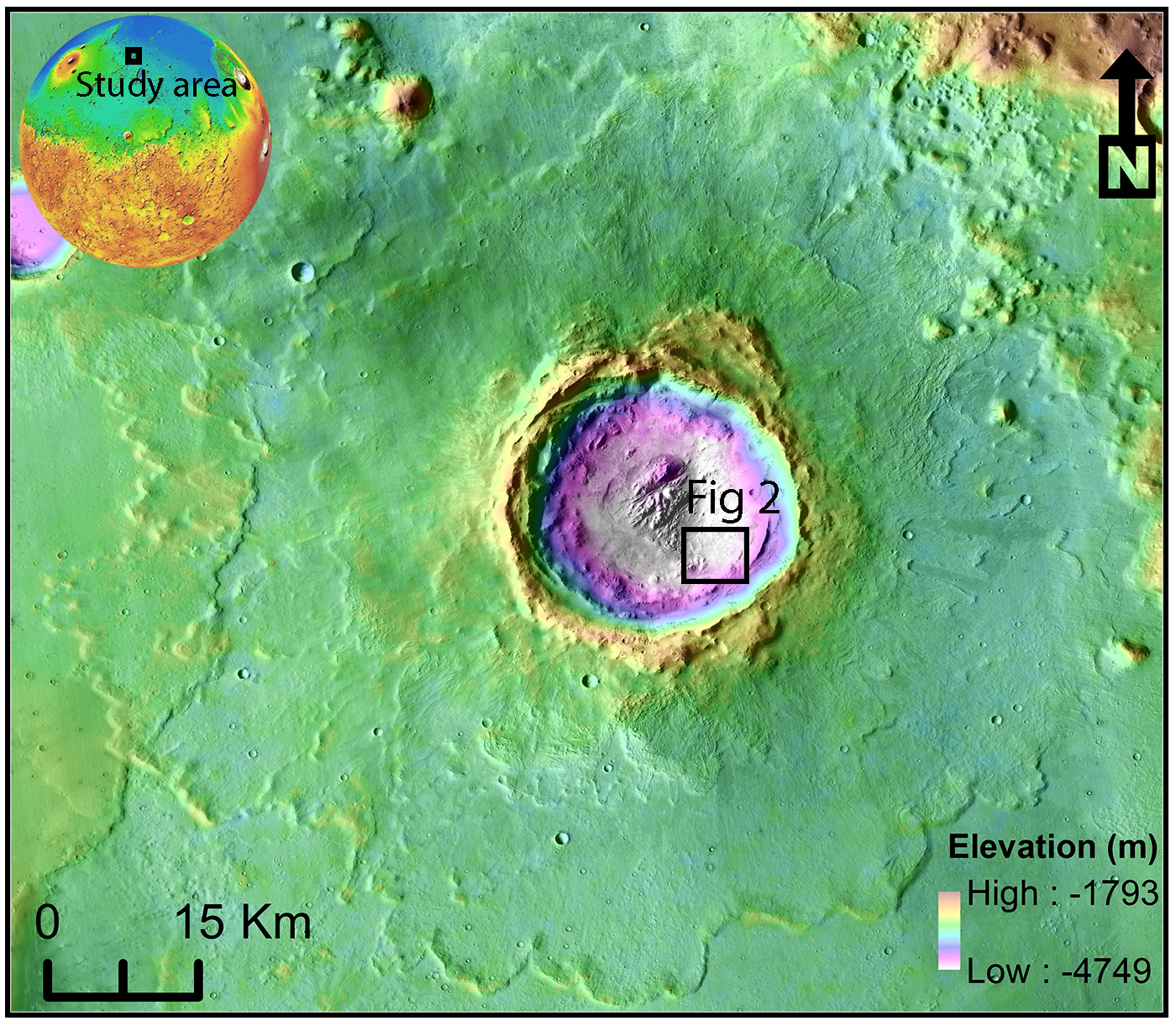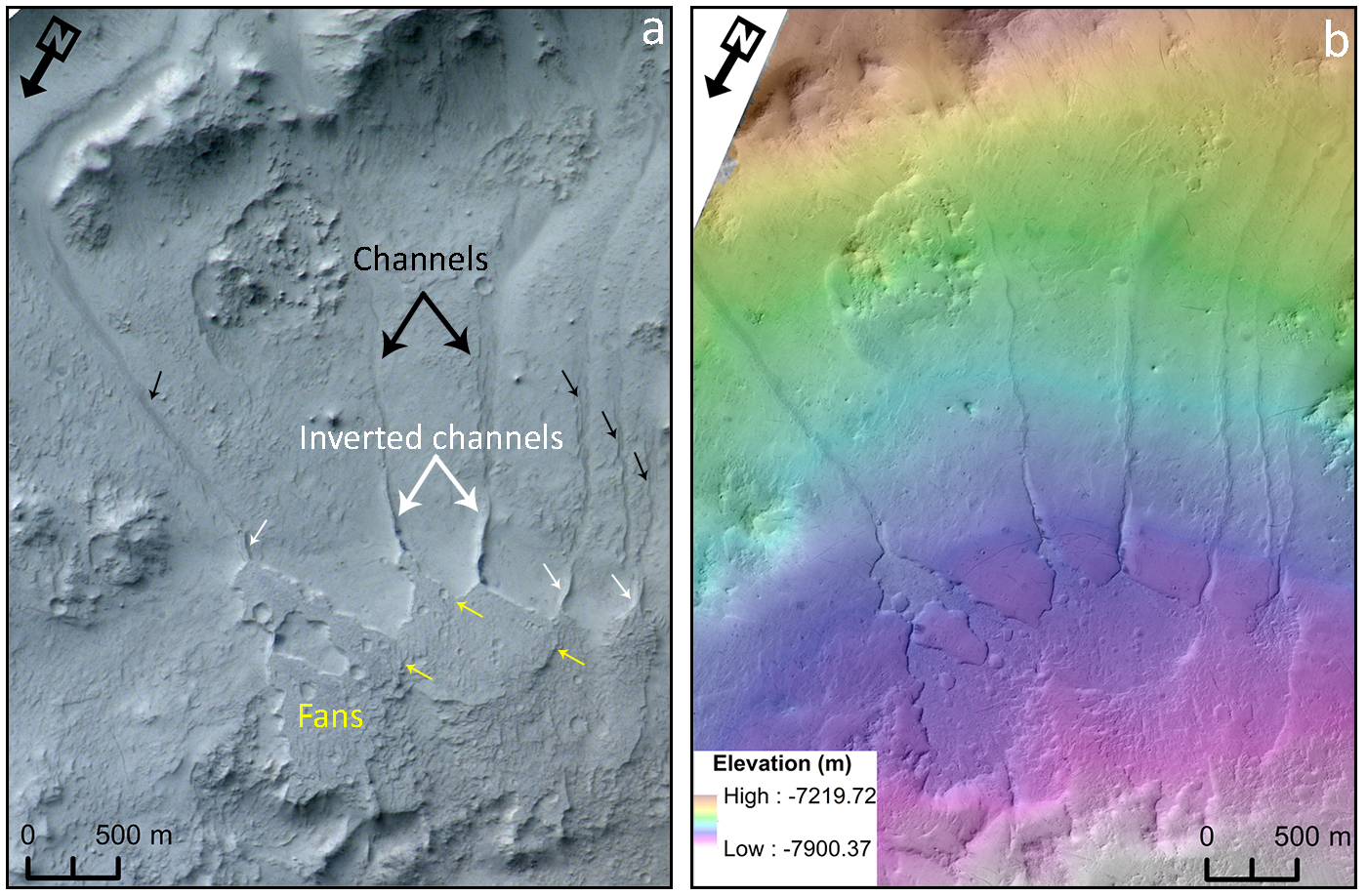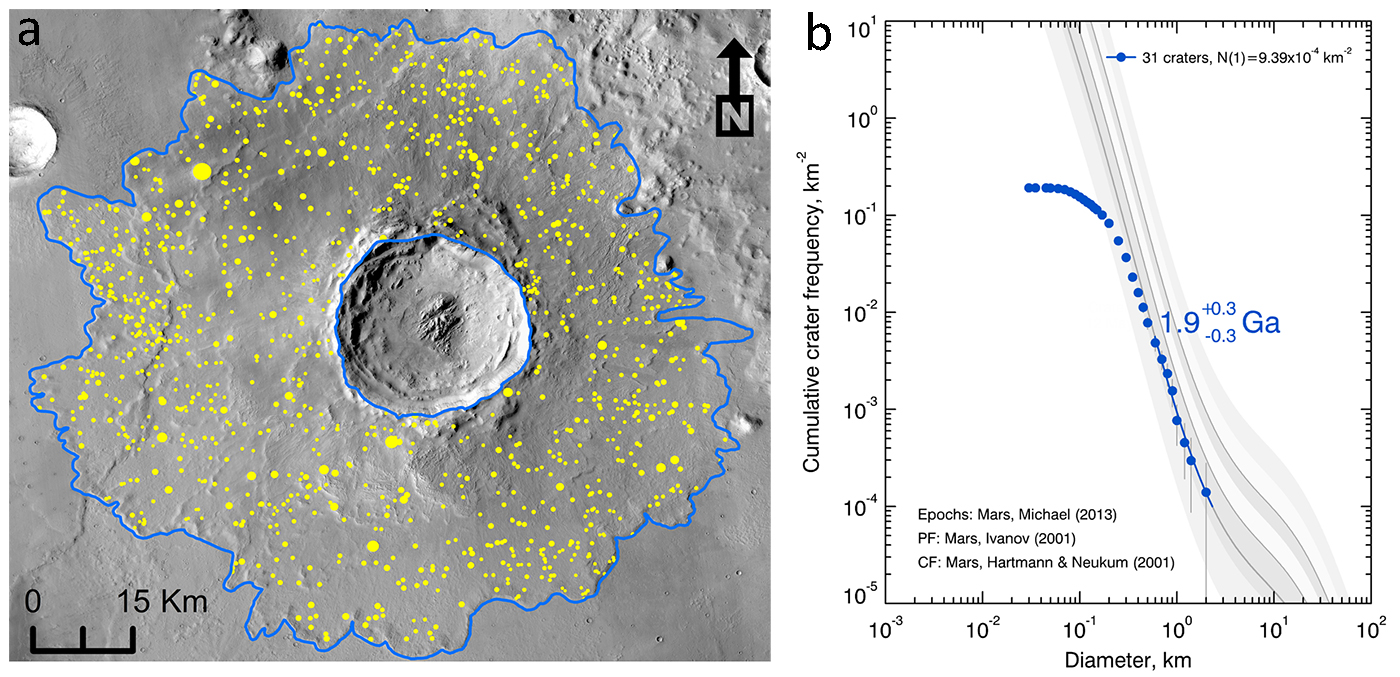Multiple superposed inverted landforms on Mars
- 1Khalifa University, Space and Planetary Science Center, and Department of Earth Science, United Arab Emirates (harish@ku.ac.ae)
- 2Planetary Sciences Division, Physical Research Laboratory, Ahmedabad, India
Introduction: Inverted landforms are positive relief and well-preserved features; typically, their formation instigated by deposition of sediments by fluvial activity and later exhumed by aeolian activity [1-3]. Their forming material offers greater resistance to erosion than the surrounding, thus produces the inverted relief [3]. On Mars, inverted landforms retained the records of paleo-environment in the form of inverted channels [1,2] and potential inverted fans, though the latter is still to confirm.
Fluvial activity is widely reported on Mars and possesses a long-time span from Noachian to Hesperian period [4]; a few reports [5,6] suggest continuation to early Amazonian epoch. However, episodes of fluvial activities during the younger epochs and effects of local environment are still uncertain. A better understanding of formation conditions and epochs of inverted landforms can yield insights into their development and paleo-climatic conditions prevailed on Mars. This study focused on inverted landforms present within an unnamed crater (centered at 22.8°N, 175.9°E), located in the north-west of Orcus Patera on Mars [Fig 1].

Fig 1: Unnamed crater with visible ejecta boundary. MOLA-HRSC DEM overliad CTX-mosaic.
Data and Methods: HRSC-MOLA blended DEM [7] and MRO-CTX mosaic [8] data were used for the preliminarily topographical and, morphological and chronological analysis respectively. For the detailed analysis of the stratigraphy and morphology, high-resolution HiRISE DEM generated using MarsSI [9] with HiRISE [10] and CaSSIS color [11] images were used respectively.
Results and Discussion: Within this unnamed crater the inverted landforms are located in the south-west region [Fig 1]. We observed that the southern wall is carved by fluvial channels associated with inverted channels towards the floor [Fig 2]. This clearly shows transition from negative-relief fluvial channels to positive-relief inverted channels. The thickness of the inverted channels is observed to vary from ~5 m to ~12 m. We also observed the association of inverted channels with triangular-shaped deposits on the crater floor [Fig 2]. These deposits typically appear like fan shape and herein interpreted as potential inverted fans [Fig 2]. The formation of these fans may have initiated by the deposition of sediments carried by flowing water and later erosion of the surrounding terrain by wind. Interestingly, these fans show superposition relationship from right to left (younger to older) in Fig 2. We identified at least three clear superposition relationships [Fig 2], thus likely suggest three or more episodes of water-flowing activity in this crater on Mars or multiple deposits occurred at the same time.

Fig 2: a) CaSSIS color image showing transition from negative-relief channels (black arrow) to positive-relief inverted channels (white arrow) with associated fans showing superposed relationship (yellow arrow). b) HiRISE DEM overlayed on HiRISE image to show topography.
Further, to determine the period of fluvial activity within this crater, we determined the modelled absolute age of the crater by computing the crater-size frequency distribution of the primary craters on the ejecta of studied crater [Fig 3]. The crater-size frequency distribution for the unnamed crater [Fig 3b] suggests an age of ~1.9 Ga (mid to late Amazonian epoch) using the CF and PF from Hartmann and Neukum (2001) and Ivanov (2001) respectively. Thus, we interpret that the inverted channels and potential inverted fans formed post to ~1.9 Ga on Mars.

Fig 3: a) Counted superposed craters (yellow) over the ejecta (blue) of studied crater for age determination. b) CSFD plot showing the best fir age of the unnamed crater.
Summary: This study demonstrates that the inverted landforms in the unnamed crater formed post to 1.9 Ga and thus recommends recent fluvial activity on Mars within the last 2 billion years. In addition, multiple superposition relationship of fans on one-another suggests that the fluvial activity was periodic in nature and at least three episodes of water flowing activity occurred in this crater. Thus, this location on Mars hosts evidence for recent and possibly recurring fluvial activity and likely have astrobiological importance. Analysis for the origin and source of water is ongoing and this may hint for the local paleo-environmental conditions prevailed on Mars.
Acknowledgments: The authors wish to acknowledge the teams of CaSSIS, HiRISE, CTX, MOLA and HRSC. Harish and MRELM acknowledge support for this work through an internal grant (8474000336-KU-SPSC).
References: [1] Jacobsen and Burr (2017), Geosphere, 13, 2154–2168. [2] Davis et al., (2016), Geology, G38247.1. [3] Zaki et al., (2018), Icarus, 309, 105-124. [4] Carr and Head (2012), EPSL, 294, 185-203. [5] Vijayan and Sinha (2017), JGR Planets, 122, 917-949. [6] Harish et al., (2021), 361, 114397. [7] Fergason et al., (2018), USGS. [8] Dickson et al., (2018), 49th LPSC, 2480. [9] McEwen et al., (2007), JGR Planets, 112, E05S02. [10] Malin et al., (2007), JGR Planets, 112, E05S04. [11] Thomas et al., (2017), SSR, 212, 1897-1944.
How to cite: Harish, , Sivaprahasam, V., and El-Maarry, M. R.: Multiple superposed inverted landforms on Mars, Europlanet Science Congress 2022, Granada, Spain, 18–23 Sep 2022, EPSC2022-772, https://doi.org/10.5194/epsc2022-772, 2022.

